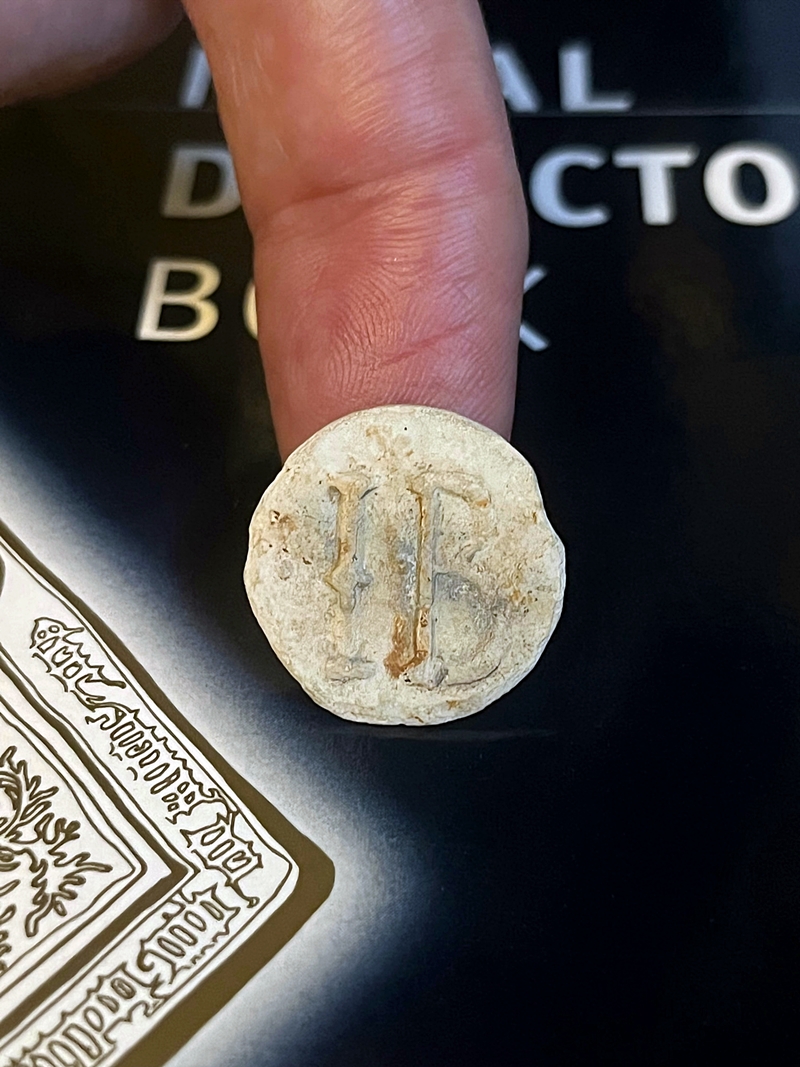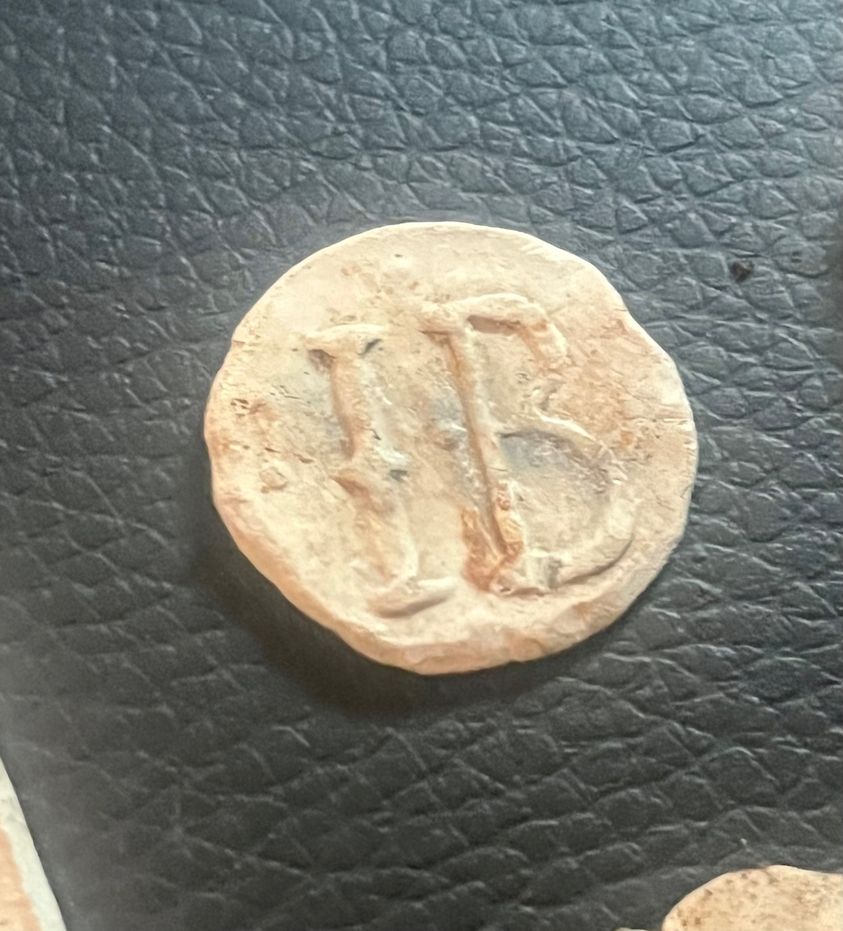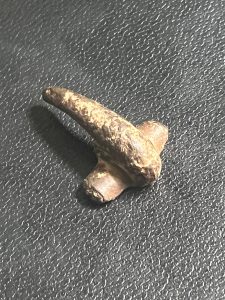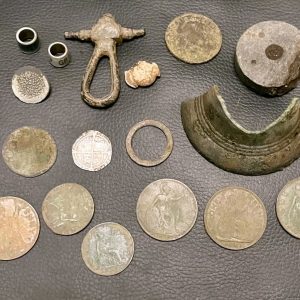
Bob and myself had decided that we would go on an organised paid for dig one day on an upcoming weekend. This particular one was in Staffordshire. We had been on a few of their digs before and they were usually fairly good, with a good amount of decent land.
It was always an early start so I had probably a 50 minute drive to get there, Bob, a little less maybe 35 minutes, but we were there ready for the off at 9.00 am. As usual with these organised digs, the organiser gives a bit of a talk to start with, to say which fields are available and which ones to stay off, then we were away.
These kind of digs make me smile as its always a bit of a mad tustle to start with as 50 plus people try to detect around each other, but it soon eases up as people start to spread out. Then you get the little friendly cliques who know each other detecting together, then the ones who charge across the field swinging their detector wildly, as if speed alone will find the goodies!
We always try to have a bit of a plan, we try to look at maps and satellite views to see where we might like to head to, and this time was no different, so pretty soon we had moved away from the crowd and found a bit of space.
To be honest we didn’t find much apart from the usual crusty buttons, toasted copper coins and random lumps of lead, but it was good fun and always great to be out doing what you love, with your best mate, even if you don’t find much.
My most interesting find was a lead token. It was quite thin but in surprisingly good condition, bearing in mind that it had been under a farmers field for the best part of 200-250 years!
It felt almost brittle but had survived incredibly well. One side was completely flat, the other had a large pair of initials with a pellet in between them. The initials were I and then a B, the pellet is just a spot, or point, or full stop in between the letters.

So this led me to wonder what this token was all about. Who or what was I.B? Why would I.B be making lead tokens, and who for?
Let’s start with what it is not. is it a gaming piece? Unlikely, a gaming piece might have a design on it, but not some initials, and it just seems to thin too have been made as a gaming piece, so I’m fairly sure that it wasn’t one of those.
So what round lead discs might have a pair of initials on it? It is fairly crude in its manufacture, certainly almost a home made feel about it.
It can only be someone in business who had those initials who needed to give out tokens for some reason. The two most obvious answers are farmers and inn owners as they often produced lead tokens that were flat and round and almost coin like in shape and were used as an unofficial currency. Coins themselves might have been in relatively short supply, but a more likely answer is that by giving out theses kind of tokens, the only place that they could be redeemed was by giving them back to the farmer or innkeeper in exchange for food, drink or other goods. This meant that person spending the token couldn’t actually spend it anywhere else.
This meant that if you worked for this person and were paid in his tokens, you then exchanged the tokens for food and drink on his premises, so in reality you were being paid for your services in food and drink, but I suppose that didn’t really matter because if you were paid in cash, then you were still going to have to buy food and drink with it, it just meant that you couldn’t buy it anywhere else and had to pay his or her prices whatever they were.
The tokens would have had a face value, so this one was probably worth one penny and you exchanged it for one pennies worth of food and drink.
But what did the I.B stand for. Well almost certainly the token issuers initials, but which I.B we might never know. Tokens with these initials have been found in different parts of the country, so are they all the same I.B ? Did the tokens travel far from where they were made and issued? Probably not, they probably never moved far from the place that they were given out, maybe only between the place of work and where the worker lived. Other tokens with the same initials were probably another farmer elsewhere who just happened to have the same initials, who also paid his workers using his own tokens. They probably didn’t go in for any unnecessary detail, just a round disc with the initials on and nothing else, just like this one. Only the size of the token might vary from one landowner to another.
So we would be looking for someone with those initials in the area that I found the token. So far I have found an innkeeper with the name Isaac Bagnall who was running an inn in 1841 less than 2 miles from where I found the token. He was born in 1786, but I suspect that the token is earlier than this, but back then the same first names were used again and again, so it wouldn’t surprise me if it was this particular Isaac Bagnall’s grandfather who may well have had the same name, who actually issued the token.
I know that this Isaac Bagnall’s father was called John, but I don’t know if his grandfather was an Isaac, but the first name was almost certainly used again and again throughout the generations of the family and his grandfather would probably have been active in the mid 1700’s wheen this token was likely to have been isssued.
All very much guesswork, but that’s probably as much as we can do here, and might never know for certain who issued this mysterious lead trade token.




